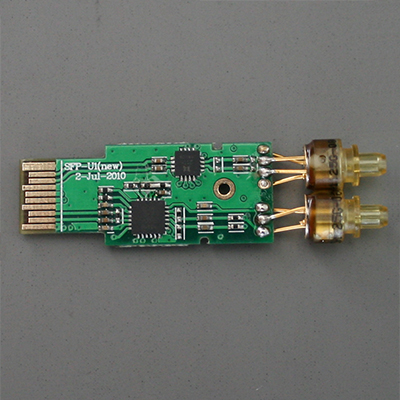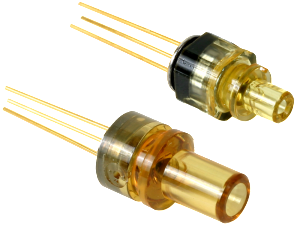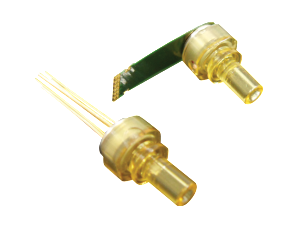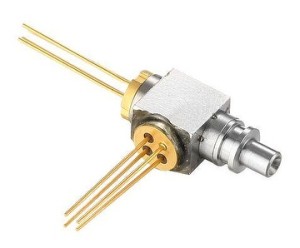10:34 AM TOSA ROSA and BOSA |
Fiber optic transceivers are key components of fiber optic transmission network. They are designed in small form-factor with some integrated optical sub-assemblies which can be suitable for high-density network. The major cost components of a transceiver module are the transmitter optical sub-assembly (TOSA), which converts an electrical and the receiver optical sub-assembly (ROSA). However, inside a BiDi (Bi-Directional) transceiver, there is a component with called "BOSA" (Bidirectional Optical Sub-Assemblies) which acts the role of TOSA and ROSA but with different principle.  TOSASemiconductor lasers used in fiber optics industry are small, sensitive devices. They are typically a few hundred microns long, with tiny pads for cathode and anode that need wire bonding for electrical connection. Moreover, to couple the light generated by them into an optical fiber, focusing lenses with tight alignment tolerances are needed. Because of these delicacies, proper packaging is a crucial aspect often packaged in the form of transmitters optical subassemblies (TOSAs).  An optical subassembly fulfills several function. First and foremost, it provides a stable mechanical platform for the laser chip along with the necessary electrical interconnects. Inside the TOSA, the interconnects are wirebonded to the laser's cathode and anode. Practical TOSAs may include a number of other electronic parts, such as power monitoring diodes, TEC coolers, and external modulators. The laser diode (and any additional device) is mounted on a substrate. TOSA Structure: The TOSA consists of a laser diode, optical interface, monitor photodiode, metal and/or plastic housing, and electrical interface. Depending upon the required functionality and application, other components may be present as well including filter elements and isolators. It is used to convert signal into an optical signal coupled into an optical fiber. ROSAThe first stage of an optical receiver circuit consists of an optical detector. The detector is usually part of a receiver optical subassembly, or ROSA. The role of a ROSA is very much similar to that of a TOSA in an optical transmitter. In fiber optic receivers, the detector is usually a PIN or APD device. A Pin or APD is essentially a reverse-biased diode with very small dark current. From a circuit point of view, the photo detector acts like a light-controlled current source. As light hits the junction, more current flows, and it is the changes in this current that the circuit must detect and amplify to reconstruct the original signal.  ROSA Structure: The ROSA consists of a photodiode, optical interface, metal and/or plastic housing, and electrical interface. Depending upon the required functionality and application, other components may be present as well including amplifiers. It is used to receive an optical signal from a fiber and convert it back into an electrical signal. BOSAFor optical communication systems, the optical signal usually transmits in a single direction along the optical fiber. To utilize the bandwidth of the optical fiber more efficiently, a bidirectional transmission technology over a single fiber has been constructively developed and widely installed in fiber-tothe- home (FTTH) networks. Recently, bidirectional optical subassembly (BOSA) modules for bidirectional transmission have been extensively developed. BOSA Structure: The BOSA consists of a TOSA, a ROSA and a WDM filter so that it can use bidirectional technology to support two wavelengths on each fiber. The most valuable advantage of BiDi transceivers is saving much cost on fibers. Cisco BiDi optics might sound like magic. Cisco BIDI optics uses Bidirectional Optical Sub-Assembly (BOSA) technology to support two wavelengths (20 Gbps total) on each fiber.  After reading the brief introduction of TOSA, ROSA and BOSA above, I hope you could have a simple concept of these optical sub-assemblies. There are divided into two industry types. One type is known as receptacle modules. This type is represented by a TOSA (Transmitter Optical Sub-Assembly) and ROSA (Receiver Optical Sub-Assembly) Assemblies. The second types are known as Coaxial modules which consists of Fiber Pigtails. These products are the core devices for any optical communication system such as an optical transponder and an ONU (Optical Network Unit). To purchase optical transceivers, such as Cisco SFP modules, HP transceiver modules and Juniper optical modules, etc. I always recommend FS.COM as they can offer the most cost-effective products with a fast delivery service. |
|
|
| Total comments: 0 | |
